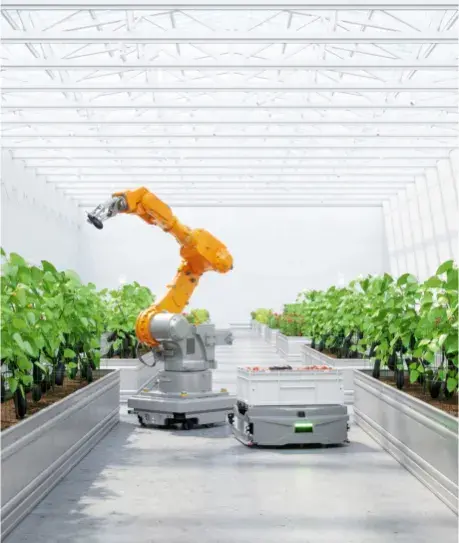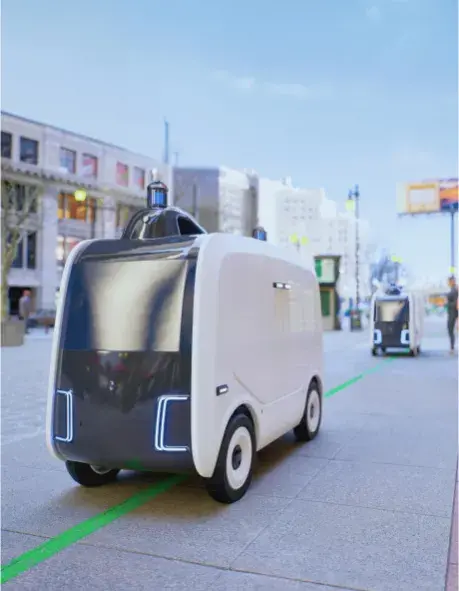
Research
Research Areas
Our research encompasses a wide spectrum of domains, each revealing unique challenges and pushing the boundaries of knowledge.
We seek innovative solutions and drive progress in the following areas:
Physics-Informed Neural Networks

Physics-Informed Neural Networks (PINNs) represent a fusion of physics and machine learning, designed to solve complex problems in physics-based domains. By embedding physical laws as constraints within the neural network's architecture or loss function, PINNs enhance accuracy and generalization capabilities, making them particularly valuable in scenarios with limited or noisy data, such as fluid dynamics or material science. Their applications span various fields, from predicting fluid flow behavior to optimizing structural designs, offering a promising approach to improve our understanding of the physical world and solve complex scientific and engineering challenges.
Natural Language Processing

Natural Language Processing (NLP) aims to make computers understand, interpret, and generate human language effectively. It closes the communication gap between humans and machines, enabling intuitive and efficient technology interactions. NLP encompasses diverse tasks, including language translation, sentiment analysis, speech recognition, text summarization, question answering, and language generation. NLP leverages algorithms, including machine learning and deep learning, to extract meaning from unstructured text data by recognizing patterns, context, and semantics. As NLP advances, it promises to transform digital interactions, offering smarter virtual assistants, improved language translation, and aiding medical diagnoses by analyzing textual medical records.
Multimodal data fusion

Multimodal Machine Learning (ML) integrates data from diverse sources like text, images, audio, and sensors to create more robust models compared to single-modality ML. By leveraging the complementary information across modalities, these models capture a broader spectrum of features for better generalization in various real-world scenarios. The challenge lies in effectively fusing and learning from different modalities, and researchers use techniques like early fusion, late fusion, and cross-modal attention mechanisms. Multimodal ML finds applications in video analysis, speech recognition, medical diagnostics, and autonomous vehicles, and as multimodal data availability increases, it promises to advance AI systems capable of comprehending and interpreting information from multiple sensory inputs, resembling human understanding.
Trustworthy AI, XAI, Bias & Ethics

Trustworthy AI is crucial, advocating for AI systems that are reliable, ethical, and transparent as they become integrated into our lives. It ensures accuracy, adherence to ethics, human values, and bias prevention. Trustworthy AI principles include fairness, transparency, interpretability, and accountability, striving for equitable treatment, understandable decision-making, explainable models, and clear responsibility attribution. This approach fosters confidence and accountability in AI technologies, contributing to a sustainable and responsible AI ecosystem that enhances human well-being while minimizing risks.
Open-set recognition & Lifelong Learning

Open-world machine learning addresses the limitation of closed-world models by handling dynamic, real-world data where new classes may emerge. It aims to create adaptable models that can handle unknown or novel data during training and inference. Techniques like open-set recognition, anomaly detection, and concept drift adaptation are used. Open-set recognition identifies known and unknown classes, anomaly detection detects abnormal data points, and concept drift adaptation updates models for changing data. This is crucial in cybersecurity, fraud detection, and autonomous vehicles, where dealing with previously unseen data is common, requiring informed decisions in evolving environments.
Computer Vision (object detection & tracking, semantic segmentation)
AI for computer vision, powered by advanced techniques like deep learning and convolutional neural networks, interprets visual information akin to the human visual system. This technology is transforming industries like healthcare, autonomous vehicles, retail, and security by enabling precise image and video analysis. AI models are trained on extensive datasets to recognize patterns, objects, and features, performing tasks like object detection, facial recognition, and scene understanding. In practical applications, it aids in disease identification in medical images, enhances autonomous driving safety, and enables augmented reality experiences. The ongoing advancements in AI for computer vision promise innovation across domains, improving our daily lives significantly.
Metaheuristic and Bayesian optimization

Metaheuristic algorithms and Bayesian optimization are versatile tools for solving complex optimization problems in various fields, including engineering, finance, machine learning, and artificial intelligence. They excel in scenarios with non-linearity, high dimensionality, and noisy objective functions, where traditional methods struggle. Metaheuristic algorithms like genetic algorithms, particle swarm optimization, and simulated annealing use intelligent search mechanisms to find optimal or near-optimal solutions. In contrast, Bayesian optimization employs probabilistic models, typically Gaussian processes, to efficiently explore the solution space, adapting to new observations. Both approaches offer flexibility and efficiency, making them indispensable for tackling intricate optimization challenges in diverse domains.
AutoML & Metalearning

Meta-learning and AutoML are cutting-edge AI fields streamlining machine learning model development. Meta-learning enables algorithms to adapt and learn from past experiences, reducing the need for extensive training data. Applications range from few-shot learning to personalized recommendations, enhancing AI's versatility. AutoML automates the end-to-end model selection and optimization process, making machine learning accessible to non-experts. Leveraging optimization methods like Bayesian optimization and genetic algorithms, it saves time, reduces human bias, and improves model robustness. Together, these fields accelerate AI development, democratize expertise, and hold the potential to transform various industries and applications.
Uncertainty estimation

Uncertainty estimation in machine learning quantifies prediction confidence, vital in safety-critical domains like healthcare and finance. It distinguishes between epistemic uncertainty, arising from data or knowledge gaps, and aleatoric uncertainty, from inherent data randomness. Techniques like Bayesian neural networks and Monte Carlo sampling estimate uncertainty for better risk assessment. Accurate estimation aids decisions in unfamiliar or ambiguous situations, improving model reliability. It's crucial as AI applications grow, promoting trustworthy and responsible systems in evolving domains.
Causal analysis

Causal inference in statistics and machine learning uncovers cause-and-effect relationships, going beyond correlations to understand underlying mechanisms. It aids decision-making, prediction, and interventions by revealing how one variable influences others. This is crucial in epidemiology, economics, and public policy, where understanding causality is vital for public health and resource allocation. Researchers use methods like randomized trials and structural equation modeling to infer causality from data. Despite challenges, causal inference remains essential for informed decision-making and impactful changes in various domains.
Reinforcement Learning

Reinforcement learning is a dynamic branch of machine learning where an agent learns decision-making by interacting with an environment through trial and error, aiming to maximize cumulative rewards. It has excelled in diverse applications, from gaming and robotics to natural language processing and finance. Algorithms like Q-learning, deep Q networks, and proximal policy optimization have advanced AI capabilities, enabling adaptive systems in complex, uncertain environments. As research progresses, reinforcement learning promises to push AI boundaries and tackle intricate challenges across domains.
Stream Learning & Concept drift

Stream learning and concept drift address challenges posed by rapidly changing data streams. Stream learning develops real-time machine learning models for applications like online advertising and financial trading. Concept drift is when data distribution changes over time, affecting model accuracy. These concepts require adaptive and incremental learning techniques to adjust to evolving data. Together, they enable AI systems to adapt to changing circumstances, providing accurate predictions in dynamic environments. As streaming data grows in industries, research in these areas remains pivotal, driving advancements for more responsive AI systems.
Distributed AI (Federated Learning, AI on the edge)

Federated learning and edge AI are innovative paradigms that decentralize machine learning, enhancing privacy and real-time decision-making. Federated learning trains models across devices without sharing raw data, preserving privacy in sectors like healthcare. Edge AI processes data locally on devices, reducing latency and enhancing reliability for applications like autonomous vehicles. Combining both enables efficient, privacy-preserving machine learning in dynamic environments. These approaches revolutionize AI, addressing privacy, latency, and scalability challenges, enabling personalized, real-time insights at the network edge.
Application Areas
The JRL-A2I's ultimate scientific goal is to bring a substantial and impactful AI-driven contribution toward addressing real-world challenges.
We tackle problems in the following application areas:
Industry

We explore AI’s transformative force in the industry to unlock new opportunities and improve operational efficiency in:
· Engineering: optimize product designs, simulate performance, identify potential improvements; building digital twins and information model for construction industry;
· Production scheduling: adjust real-time schedules based on resource availability, order prioritization, production constraints, and other possible factors.
· Prognosis: identify patterns and indicators, detect early anomalies, support preventive maintenance.
· Supply chain logistics: predict demand and optimize inventory levels.
· Precision agriculture: enable precise irrigation, targeted pesticide application, and optimized resource allocation, based on soil conditions, weather patterns, and crop health analysis
Energy

In the energy sector, we explore AI’s potential to reduce costs, increase sustainability, and pave the way for a more resilient and intelligent energy ecosystem. We provide data-based solutions for the full energy chain, covering a wide spectrum of AI topics:
· Forecast of the energy demand and consumption: predictive models for accurately forecast energy production and demand through effective resource allocation, grid management, and decision-making; and consumption in different regions and sectors.
· Design of energy systems: Geophysics: inverse methods for soil surveys, analysis of seismic data, prediction of subsurface structures, identification of potential energy reserves; Optimisation of designs of energy systems; data driven models for acceleration of numerical simulations.
· Power production: Offshore Renewable Energies (wind, waves, currents): prediction of optimal energy generation.
· Operation and maintenance of energy assets: inverse methods for identfication and classification of anomalies, damages and failures in energy systems; preventive and prognostic approaches for operation and maintenance; degradation models and remaining useful life estimation.
· Smart grids and distribution: optimize load distribution and enhance energy efficiency at the consumer level, contributing to overall grid stability and sustainability; help consumers and energy providers to make informed decisions rega.
Health

Through the integration of AI in medical applications, we are making a transformative impact on how healthcare is delivered, diagnosed, and researched. Our work focuses on the following:
· Medical imaging: analyze and interpret complex images such as X-rays, CT scans, MRIs, mammograms, detect early diseases, and identify abnormalities.
· Personalized treatment design: design specific treatments, assess potential risks, and recommend tailored therapies.
· Drug discovery and cheminformatics: identify potential drug candidates, predict their efficacy and drug-drug interactions, optimize drug dosages, and facilitate precision medicine approaches.
· Cardiopulmonary resuscitation: deliver optimal timing and technique of chest compressions and ventilation.
Mobility&Transport

In mobility and transport, JRL-A2I aims to optimize how people and goods move from one place to another. We focus on the following areas:
· Multimodal transport planning: optimize routes, minimize congestion, and provide travelers with personalized, seamless multimodal journeys.
· Road traffic modeling: predict traffic flow, congestion patterns, and incident occurrences, helping transportation authorities and traffic management systems respond proactively.
· Electromobility: optimize EV charging stations' locations, predict charging demands, and manage charging schedules to ensure efficient utilization of resources.
· Vehicular perception and context understanding: detect and recognize objects, pedestrians, traffic signs, and road conditions.
· Multi-criteria route optimization: generate optimized routes that minimize travel time, fuel consumption, and emissions while considering user preferences and constraints.

